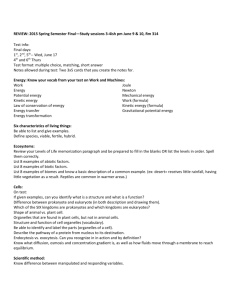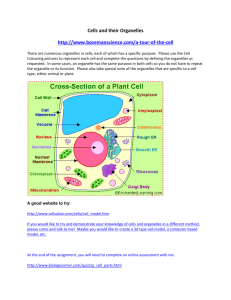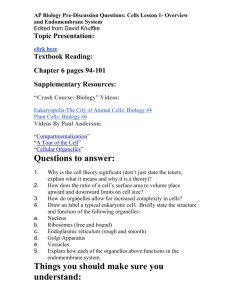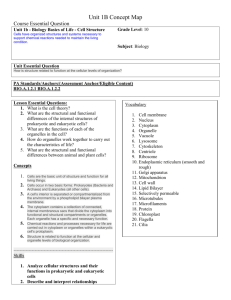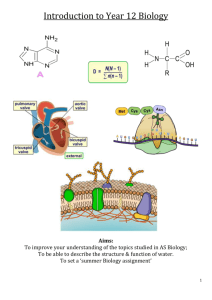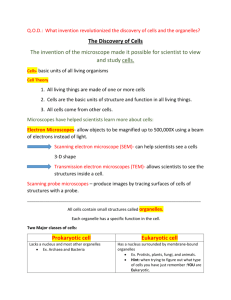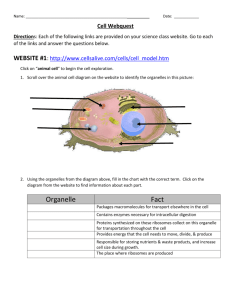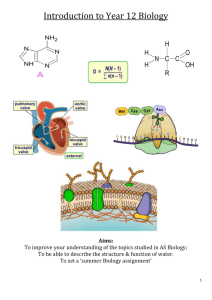Biology A Level Transition Task 2015
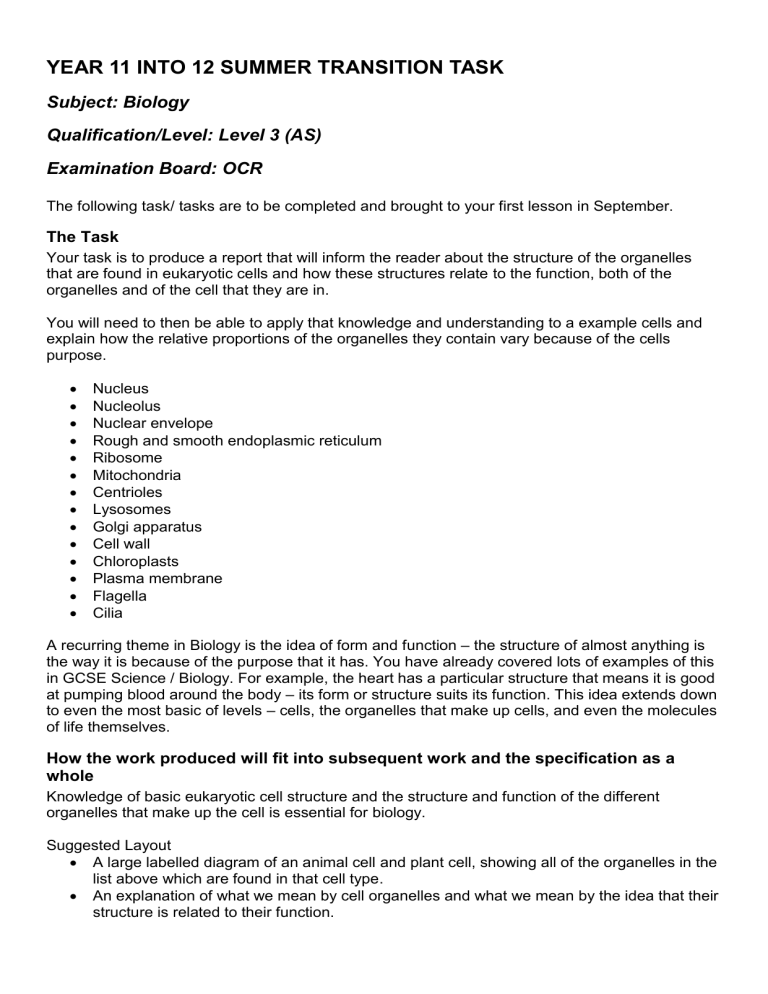
YEAR 11 INTO 12 SUMMER TRANSITION TASK
Subject: Biology
Qualification/Level: Level 3 (AS)
Examination Board: OCR
The following task/ tasks are to be completed and brought to your first lesson in September.
The Task
Your task is to produce a report that will inform the reader about the structure of the organelles that are found in eukaryotic cells and how these structures relate to the function, both of the organelles and of the cell that they are in.
You will need to then be able to apply that knowledge and understanding to a example cells and explain how the relative proportions of the organelles they contain vary because of the cells purpose.
Nucleus
Nucleolus
Nuclear envelope
Rough and smooth endoplasmic reticulum
Ribosome
Mitochondria
Centrioles
Lysosomes
Golgi apparatus
Cell wall
Chloroplasts
Plasma membrane
Flagella
Cilia
A recurring theme in Biology is the idea of form and function
– the structure of almost anything is the way it is because of the purpose that it has. You have already covered lots of examples of this in GCSE Science / Biology. For example, the heart has a particular structure that means it is good at pumping blood around the body
– its form or structure suits its function. This idea extends down to even the most basic of levels – cells, the organelles that make up cells, and even the molecules of life themselves.
How the work produced will fit into subsequent work and the specification as a whole
Knowledge of basic eukaryotic cell structure and the structure and function of the different organelles that make up the cell is essential for biology.
Suggested Layout
A large labelled diagram of an animal cell and plant cell, showing all of the organelles in the list above which are found in that cell type.
An explanation of what we mean by cell organelles and what we mean by the idea that their structure is related to their function.
A labelled diagram of the organelles shown above, as they would be seen under an electron microscope, an explanation of their structure and a description of their function.
Extension o Provide a clear explanation showing how the structure of the organelle supports its function (i.e. link together the structure and function)
How the work should be presented
The work should be presented in the form of a hand written report. How the report is laid out is not important, but it should include hand drawn and labelled diagrams, descriptions and explanations.
It must not contain any material that is directly copied either from books or from the internet.
How the work will be assessed
The work will be collected and teacher assessed under Assessment Objective 1 and 2 as shown in the table below
Success criteria
A successful piece of work will be one considered to achieve the following criteria:
Scientifically accurate
Provide a suitable resource for revision of the structure and function of cells and cell organelles.
Hand written and include hand drawn diagrams
Presented in continuous prose.
Devoid of any work directly copied either from text books or the internet
Include links between the structure and function (extension requirement).
A list of references should be provided with the completed task
Resources to be used
Any basic AS level Biology textbook will provide information on cell organelles. The internet has a wealth of information and diagrams that may be useful.
Who to contact if you should require further assistance with the work before the end of term
Dr H Johnson – heidi.johnson@manorschool.northants.sch.uk
What equipment will be needed for the subject?
Basic stationery, a course textbook will be provided but students may wish to purchase additional study guides. Details of available study guides will be available at the start of the next academic year.
